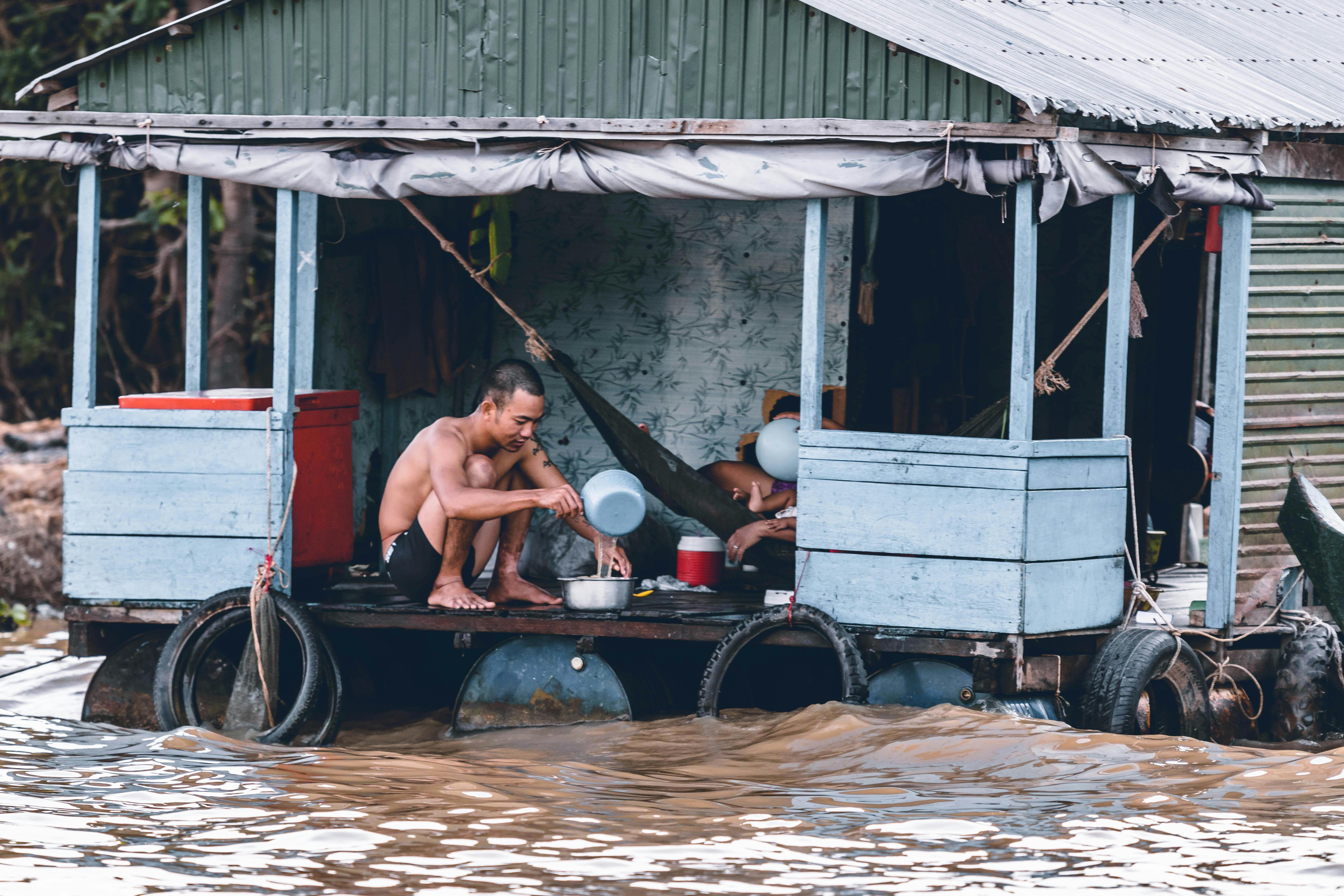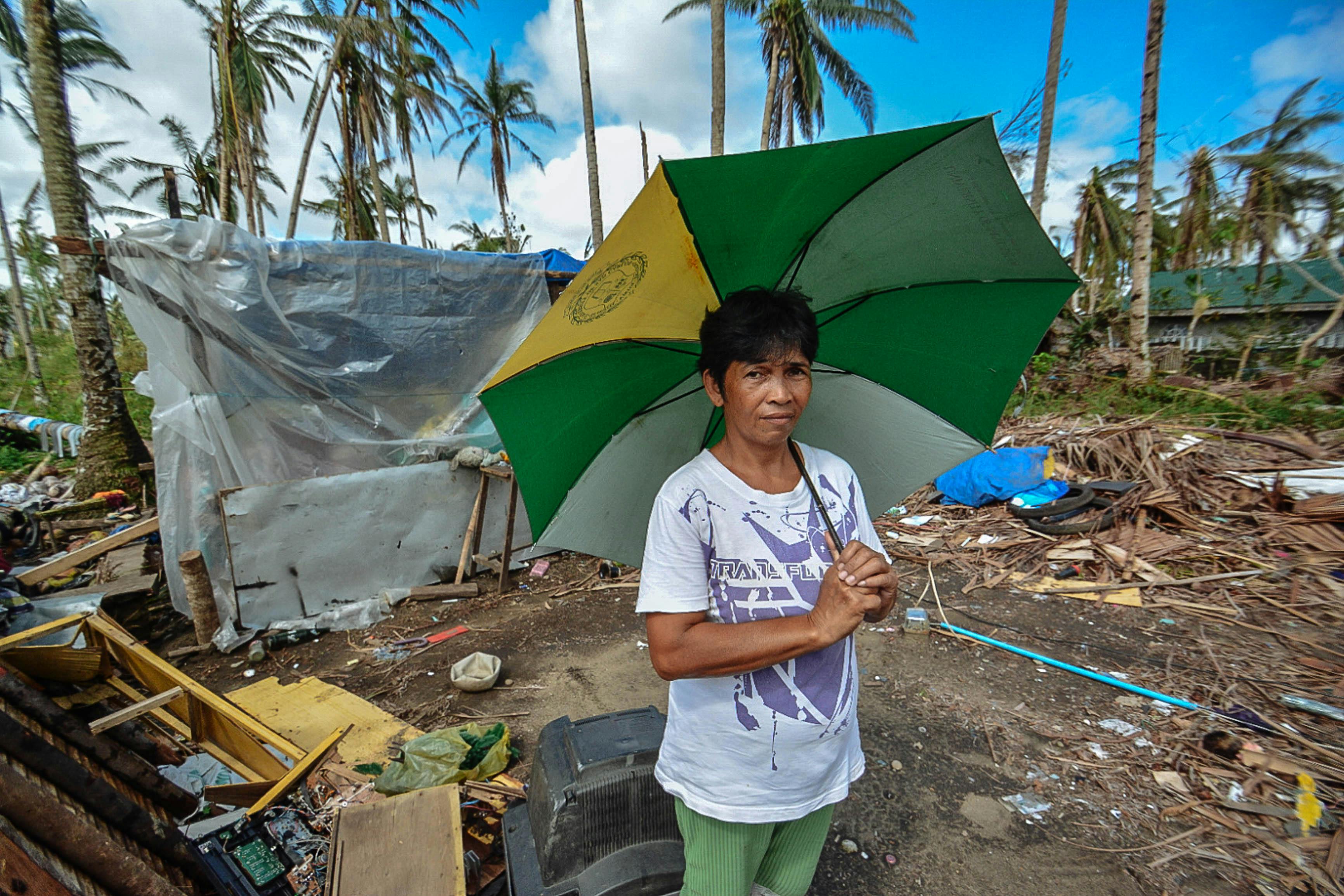In this article, we will explore the topic of floods and how to better understand and prepare for water overflows. Whether you live in an area prone to flooding or simply want to be prepared for unexpected circumstances, it’s essential to have a good understanding of the implications and potential risks that floods can pose. By gaining insight into the causes, effects, and necessary preparations, you can ensure the safety of yourself, your loved ones, and your property when faced with water overflows. So, let’s dive in and equip ourselves with the knowledge needed to protect and navigate through these challenging situations.
Understanding Floods
Definition of floods
Floods are natural disasters that occur when there is an overflow of water onto normally dry land. This excess water can come from several sources, including heavy rainfall, melting snow, or the breaking of dams or levees. Floods can happen suddenly or gradually, posing a significant threat to both human lives and the environment.
Causes of floods
There are various factors that can lead to the occurrence of floods. The primary cause is heavy rainfall, especially during storms or hurricanes. When the rainwater exceeds the capacity of rivers, lakes, or drainage systems, it accumulates on the land, resulting in flooding. Additionally, rapid snowmelt in mountainous regions or the failure of dams and levees can also cause flooding. Climate change and deforestation are contributing factors as well, as they can alter the natural water flow and increase the frequency and severity of floods.
Types of floods
Floods can be classified into different types based on their origin and characteristics. Flash floods are sudden and occur within a few hours after heavy rainfall. River floods, on the other hand, take place when river levels exceed their banks due to intense precipitation or dam releases. Coastal floods result from storm surges during hurricanes or high tides, causing water to flood coastal areas. Finally, urban floods occur when the drainage systems in cities become overwhelmed, resulting in water accumulation on streets and in buildings.
Effects of Floods
Damage to property
Floods can cause extensive damage to properties and infrastructure. The force of the rushing water can erode the foundations of buildings, leading to their collapse. Water infiltration can also damage electrical systems, causing fires or electrocution hazards. Additionally, homes and businesses may experience damage to furniture, appliances, and personal belongings, leading to significant financial losses.
Loss of human and animal lives
One of the most devastating consequences of floods is the loss of human and animal lives. Swiftly moving floodwaters can create dangerous situations, leading to drownings and injuries. People may also become trapped in buildings or vehicles, unable to escape the rising waters. Animals can drown or suffer injuries due to the force of the floodwaters, resulting in a tragic loss of biodiversity.
Economic impacts
Floods have severe economic impacts on communities and countries. The cost of repairing or rebuilding damaged infrastructure, such as roads and bridges, can be significant. Businesses may suffer from disruptions in operations, leading to income losses and reduced economic activity. Agriculture, a crucial sector for many regions, can be severely affected, as crops are destroyed and livestock may be lost. Additionally, the expenses associated with emergency response, rescue operations, and relief efforts place a considerable burden on local and national budgets.

Flood Prone Areas
Identifying flood-prone areas
Identifying flood-prone areas is crucial for effective flood management and disaster preparedness. Geographical factors such as proximity to rivers, lakes, or coastal areas can indicate areas at higher risk of flooding. Historical flood data also plays a vital role in determining flood-prone regions. Local authorities and environmental agencies collect and analyze this data to create flood hazard maps, providing valuable information to residents and policymakers.
Factors contributing to vulnerability
Several factors contribute to the vulnerability of an area to floods. Urbanization and the construction of buildings in floodplains can increase the risk of flooding. Improper land use management, such as excessive deforestation or paving surfaces, can limit the land’s ability to absorb water, exacerbating the impact of floods. Inadequate infrastructure, including drainage systems and levees, can fail when faced with excessive water, placing communities at higher risk.
Mapping flood zones
Mapping flood zones is essential for effective urban planning and emergency management. Digital elevation models, hydrological modeling, and historical flood data are used to determine the areas at risk of flooding. By identifying these zones, authorities can establish regulations and guidelines for construction, land use, and evacuation planning. Residents can also access these flood maps to understand their potential exposure and take necessary precautions.
Flood Warning Systems
Importance of flood warning systems
Flood warning systems play a critical role in minimizing the impact of floods. By providing early warnings, these systems can give people adequate time to evacuate or take precautionary measures, reducing the loss of life and property damage. They also help emergency management agencies coordinate response efforts and allocate resources effectively.
Components of a flood warning system
A comprehensive flood warning system comprises various components. Rainfall and river level monitoring stations provide real-time data to detect and predict flood events. This information is transmitted to a central monitoring center, where it is analyzed and disseminated to the public through emergency alerts. Sirens, media broadcasts, mobile applications, and social media platforms are common communication channels used to deliver flood warnings and evacuation orders.
Types of flood alerts
Flood warnings are categorized into different levels depending on the severity of the flood event. A flood watch indicates that conditions are favorable for flooding, while a flood warning means that flooding is imminent or already occurring. Flash flood alerts are issued when there is rapid and life-threatening flooding, requiring immediate action. These alerts help individuals and communities stay informed and make informed decisions to protect themselves and their property.

Preparing for Floods
Formulating an emergency plan
Having an emergency plan is crucial for preparedness in the event of a flood. This plan should include evacuation routes, designated meeting points, and communication strategies with family members and neighbors. Identifying safe areas, such as higher ground or community shelters, should also be part of the plan. Ensuring that everyone in the household understands and practices the plan regularly increases the chances of a safe response during a flood emergency.
Stocking emergency supplies
Preparing an emergency supply kit is essential for surviving a flood. It should include essential items such as non-perishable food, drinking water, first aid supplies, flashlights, batteries, and a portable radio. Additional items to consider are personal hygiene products, medications, blankets, and a waterproof container for important documents. It is crucial to regularly check and replenish the supplies to ensure they are up to date and ready for use during an emergency.
Securing valuable possessions
Protecting valuable possessions from flood damage should be a priority. Important documents, such as identification papers, insurance policies, and medical records, should be stored in waterproof containers or bags. Valuables like jewelry, photographs, and sentimental items should be placed in elevated locations or safe, waterproof containers. Moving furniture and appliances to higher levels or securing them can also minimize potential damage.
Creating Flood Barriers
Sandbags as flood barriers
Sandbags are commonly used as temporary flood barriers. They are cost-effective and readily available, making them a practical solution for flood-prone areas. When properly filled, stacked, and placed, sandbags can redirect and absorb water, creating a barrier to protect structures and properties. It is important to follow proper procedures for filling and placing sandbags to maximize their effectiveness in flood mitigation.
Installing flood gates
Flood gates are permanent or temporary barriers designed to block or control the flow of water during floods. They can be installed in waterways, drainage systems, or entrances to buildings. Flood gates can help prevent water from entering critical areas, redirecting it to less vulnerable locations or retaining it until the flood threat subsides. Regular maintenance and testing of flood gates are essential to ensure their proper functioning.
Using inflatable barriers
Inflatable barriers, also known as flood bags or tubes, are portable and easy to deploy flood protection devices. They can be quickly inflated with water or air to create a barrier against floodwaters. Inflatable barriers are versatile and can be used in various settings, such as homes, businesses, and temporary flood defenses. However, they require regular inspection and maintenance to ensure their integrity and effectiveness during floods.

Evacuation Procedures
When to evacuate
Knowing when to evacuate during a flood is crucial for personal safety. Authorities and flood warning systems provide guidance on evacuation orders based on the severity of the flood event. If you are in an area at risk of flooding, it is important to follow these orders and evacuate promptly. Never underestimate the power of floodwaters, and prioritize your safety and the safety of your loved ones above all else.
Creating evacuation routes
Having clearly defined evacuation routes is essential for orderly and safe evacuations. Local authorities should designate primary and secondary evacuation routes and provide clear signage to guide people during emergencies. Residents can familiarize themselves with these routes and plan alternative options if certain routes become impassable. It is advisable to practice evacuating using different routes to ensure familiarity and preparedness.
Providing for vulnerable populations
When planning for evacuations, it is important to consider the needs of vulnerable populations, such as the elderly, disabled individuals, or those with limited mobility. Local authorities should establish protocols to assist these individuals in evacuating and provide accessible transportation or shelter options. Engaging community organizations, volunteers, and healthcare providers can help ensure that the specific needs of vulnerable populations are met during evacuations.
Preparing Your Home
Elevating electrical systems
Elevating electrical systems can help protect them from flood damage. Electrical panels, switches, and outlets should be installed above the expected flood level. Elevating electrical equipment minimizes the risk of electrical shock and prevents damage to the system. Hiring a qualified electrician to assess and elevate the electrical components of your home is recommended to ensure compliance with safety standards.
Flood-proofing basements
Basements are particularly vulnerable to flood damage, so taking measures to flood-proof them is crucial. Installing sump pumps can help remove water from the basement, preventing accumulation. Waterproofing the basement walls and floors, sealing cracks, and installing backflow prevention devices are also effective flood-proofing techniques. It is essential to regularly inspect and maintain these flood-proofing measures to ensure their functionality.
Installing backflow valves
Backflow valves, also known as check valves, prevent sewage and floodwaters from flowing back into the home through the sewage system during floods. They are typically installed in the main sewer line or individual pipes that connect to fixtures below the expected flood level. Backflow valves help prevent contamination and damage to the plumbing system and should be regularly inspected and maintained to ensure their proper functioning.
Emergency Communication
Establishing emergency contacts
Establishing a communication network of emergency contacts is crucial during floods. Ensure that you have a list of important emergency numbers, including local authorities, the nearest hospital, and utility companies. Inform family members and neighbors about your emergency contacts and share your contact information with them. Mutual communication within the community can help ensure that information is disseminated efficiently during a flood event.
Using communication tools
Utilizing various communication tools is essential for staying informed during floods. Radios, both portable and battery-powered, can provide updates and emergency information. Smartphones and mobile applications enable real-time access to weather forecasts, flood warnings, and emergency alerts. Staying connected with local news channels and social media platforms can also provide valuable information during flood events.
Alternative communication methods
In cases where traditional communication channels may be compromised during floods, alternative communication methods should be considered. Establishing a community-based communication system, such as a call tree or walkie-talkie network, can provide a means of communication when regular channels are inaccessible. Engaging with community organizations and local emergency management agencies can provide guidance on alternative communication methods specific to your area.
Recovering from Floods
Assessing damage
After a flood event, it is essential to assess the damage to your property before initiating repairs or clean-up efforts. Evaluate the structural integrity of your home and identify any potential hazards. Document the damage by taking photographs or videos, as this will be important for insurance claims and any potential assistance programs. It is advisable to consult professionals, such as building inspectors or engineers, to ensure a thorough assessment.
Documenting losses for insurance claims
Documenting losses and damages for insurance claims is crucial to recover financially from a flood. Compile a detailed list of items that have been damaged or destroyed, including their original value, purchase date, and any receipts or proof of ownership. Submit this inventory to your insurance provider along with the supporting documentation. Promptly reporting and providing accurate information will expedite the claims process and support a fair settlement.
Mold remediation
Mold growth is a common issue after floods due to the excessive moisture. Mold can cause health problems and further damage to the property if not addressed promptly. If you discover mold in your home, it is important to hire a professional mold remediation specialist. They will assess the extent of the mold growth, safely remove affected materials, and implement measures to prevent future mold growth. Proper ventilation and dehumidification can also aid in preventing and mitigating mold issues.





